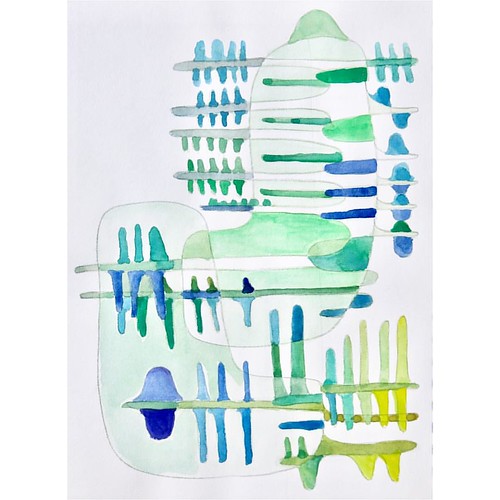The following sections and figures: 1. ?Parameters for the dynamics of RyR2 (with Figures S1, S2 and S3). 2.- Return map analysis of calcium alternans at constant SR load (with Figures S4 and S5). 3. ?Restitution of calcium release (with Figure 22948146 S6). (PDF)AcknowledgmentsWe would like to thank Dr. Y. Shiferaw for insights and comments to the manuscript.Author ContributionsPrepared figures: EA-L BE Edited and revised manuscript: EA-L IRC AP JC LH-M BE.. Conceived and designed the experiments: EA-L IRC AP JC LH-M BE. Performed the experiments: EA-L BE. Analyzed the data: EA-L IRC AP JC LH-M BE. Wrote the paper: EA-L LH-M BE.
Purification and analysis of a distinct cell type depend on the previous isolation of  a particular cell subpopulation from a heterogeneous cell mixture. 23977191 Cell separation methods rely on distinctive properties of the target cells, including size, density, behavior or ASP015K surface charge [1]. Gradient centrifugation, centrifugal elutriation, filtration and electrophoresis are widely used to achieve selective sorting based on physical differences between the cells in suspension [1]. Another usual approach consists in inhibiting key metabolic pathways required for cell growth or survival, such as blocking DNA synthesis (e.g. with hydroxyurea) or serum deprivation for a specific amount of time, to arrest the cell cycle at a particular stage, possibly eliminating unwanted cells [2]. Separation of the cells according to surface markers is of particular interest to provide highly purified populations, especially via immunolabeling of a cluster of differentiation (CD) with a fluorophore or a magnetic bead for Fluorescent Activated Cell Sorting (FACS) [3] and magnetic separation [4], respectively.Specific isolation of the cells of interest using antibodies immobilized on a solid surface has been exploited in Cell-Affinity Chromatography (CAC) devices [5?] and protein arrays [10?4]. Affinity-based cell capture performed in miniaturized devices has been recently reported, including parallel functionalized microfluidic channels [15,16] and single microchannels
a particular cell subpopulation from a heterogeneous cell mixture. 23977191 Cell separation methods rely on distinctive properties of the target cells, including size, density, behavior or ASP015K surface charge [1]. Gradient centrifugation, centrifugal elutriation, filtration and electrophoresis are widely used to achieve selective sorting based on physical differences between the cells in suspension [1]. Another usual approach consists in inhibiting key metabolic pathways required for cell growth or survival, such as blocking DNA synthesis (e.g. with hydroxyurea) or serum deprivation for a specific amount of time, to arrest the cell cycle at a particular stage, possibly eliminating unwanted cells [2]. Separation of the cells according to surface markers is of particular interest to provide highly purified populations, especially via immunolabeling of a cluster of differentiation (CD) with a fluorophore or a magnetic bead for Fluorescent Activated Cell Sorting (FACS) [3] and magnetic separation [4], respectively.Specific isolation of the cells of interest using antibodies immobilized on a solid surface has been exploited in Cell-Affinity Chromatography (CAC) devices [5?] and protein arrays [10?4]. Affinity-based cell capture performed in miniaturized devices has been recently reported, including parallel functionalized microfluidic channels [15,16] and single microchannels  containing several antibody-coated regions [17,18], antibody-covered micropillars [19,20] or an antibody-coated porous membrane [21]. Shear flow is commonly employed to detach cells having low affinity with the antibody-coated surface, thus enriching cell 34540-22-2 subpopulations from initially heterogeneous cell mixtures [22?4]. Shear stress exerted on antibody-coated solid surfaces was also used to quantify cell adhesion [25]. Additionally, individual cells were specifically arrayed in an antibody-coated microwell array for the rapid optical characterization of cellular phenotypes [26]. Cell separation approaches are commonly combined to purify the target cell type, e.g. specific antibody-mediated aggregation of erythrocytes around the cells to form rosettes which are thenCell Capture by Bio-Functionalized Microporesseparated by centrifugation [27,28], cell cycle arrest followed by centrifugation [2] or CAC followed by electrokinetic separation [16]. It is also standard to quantify success or failure of cell sorting using flow cytometry [3] or the resistive-pulse technique (Coulter counter) [15,16,29]. An extreme case of cell separation is the capture of scarce or very rare cells [30,31], e.g. circulating tumor cells, fetal cells in the mother’s blood, stem cells or induced pluripotent stem cells. CAC may provide a solution to isolate some of these cells if they own a specific antigen on the.The following sections and figures: 1. ?Parameters for the dynamics of RyR2 (with Figures S1, S2 and S3). 2.- Return map analysis of calcium alternans at constant SR load (with Figures S4 and S5). 3. ?Restitution of calcium release (with Figure 22948146 S6). (PDF)AcknowledgmentsWe would like to thank Dr. Y. Shiferaw for insights and comments to the manuscript.Author ContributionsPrepared figures: EA-L BE Edited and revised manuscript: EA-L IRC AP JC LH-M BE.. Conceived and designed the experiments: EA-L IRC AP JC LH-M BE. Performed the experiments: EA-L BE. Analyzed the data: EA-L IRC AP JC LH-M BE. Wrote the paper: EA-L LH-M BE.
containing several antibody-coated regions [17,18], antibody-covered micropillars [19,20] or an antibody-coated porous membrane [21]. Shear flow is commonly employed to detach cells having low affinity with the antibody-coated surface, thus enriching cell 34540-22-2 subpopulations from initially heterogeneous cell mixtures [22?4]. Shear stress exerted on antibody-coated solid surfaces was also used to quantify cell adhesion [25]. Additionally, individual cells were specifically arrayed in an antibody-coated microwell array for the rapid optical characterization of cellular phenotypes [26]. Cell separation approaches are commonly combined to purify the target cell type, e.g. specific antibody-mediated aggregation of erythrocytes around the cells to form rosettes which are thenCell Capture by Bio-Functionalized Microporesseparated by centrifugation [27,28], cell cycle arrest followed by centrifugation [2] or CAC followed by electrokinetic separation [16]. It is also standard to quantify success or failure of cell sorting using flow cytometry [3] or the resistive-pulse technique (Coulter counter) [15,16,29]. An extreme case of cell separation is the capture of scarce or very rare cells [30,31], e.g. circulating tumor cells, fetal cells in the mother’s blood, stem cells or induced pluripotent stem cells. CAC may provide a solution to isolate some of these cells if they own a specific antigen on the.The following sections and figures: 1. ?Parameters for the dynamics of RyR2 (with Figures S1, S2 and S3). 2.- Return map analysis of calcium alternans at constant SR load (with Figures S4 and S5). 3. ?Restitution of calcium release (with Figure 22948146 S6). (PDF)AcknowledgmentsWe would like to thank Dr. Y. Shiferaw for insights and comments to the manuscript.Author ContributionsPrepared figures: EA-L BE Edited and revised manuscript: EA-L IRC AP JC LH-M BE.. Conceived and designed the experiments: EA-L IRC AP JC LH-M BE. Performed the experiments: EA-L BE. Analyzed the data: EA-L IRC AP JC LH-M BE. Wrote the paper: EA-L LH-M BE.
Purification and analysis of a distinct cell type depend on the previous isolation of a particular cell subpopulation from a heterogeneous cell mixture. 23977191 Cell separation methods rely on distinctive properties of the target cells, including size, density, behavior or surface charge [1]. Gradient centrifugation, centrifugal elutriation, filtration and electrophoresis are widely used to achieve selective sorting based on physical differences between the cells in suspension [1]. Another usual approach consists in inhibiting key metabolic pathways required for cell growth or survival, such as blocking DNA synthesis (e.g. with hydroxyurea) or serum deprivation for a specific amount of time, to arrest the cell cycle at a particular stage, possibly eliminating unwanted cells [2]. Separation of the cells according to surface markers is of particular interest to provide highly purified populations, especially via immunolabeling of a cluster of differentiation (CD) with a fluorophore or a magnetic bead for Fluorescent Activated Cell Sorting (FACS) [3] and magnetic separation [4], respectively.Specific isolation of the cells of interest using antibodies immobilized on a solid surface has been exploited in Cell-Affinity Chromatography (CAC) devices [5?] and protein arrays [10?4]. Affinity-based cell capture performed in miniaturized devices has been recently reported, including parallel functionalized microfluidic channels [15,16] and single microchannels containing several antibody-coated regions [17,18], antibody-covered micropillars [19,20] or an antibody-coated porous membrane [21]. Shear flow is commonly employed to detach cells having low affinity with the antibody-coated surface, thus enriching cell subpopulations from initially heterogeneous cell mixtures [22?4]. Shear stress exerted on antibody-coated solid surfaces was also used to quantify cell adhesion [25]. Additionally, individual cells were specifically arrayed in an antibody-coated microwell array for the rapid optical characterization of cellular phenotypes [26]. Cell separation approaches are commonly combined to purify the target cell type, e.g. specific antibody-mediated aggregation of erythrocytes around the cells to form rosettes which are thenCell Capture by Bio-Functionalized Microporesseparated by centrifugation [27,28], cell cycle arrest followed by centrifugation [2] or CAC followed by electrokinetic separation [16]. It is also standard to quantify success or failure of cell sorting using flow cytometry [3] or the resistive-pulse technique (Coulter counter) [15,16,29]. An extreme case of cell separation is the capture of scarce or very rare cells [30,31], e.g. circulating tumor cells, fetal cells in the mother’s blood, stem cells or induced pluripotent stem cells. CAC may provide a solution to isolate some of these cells if they own a specific antigen on the.